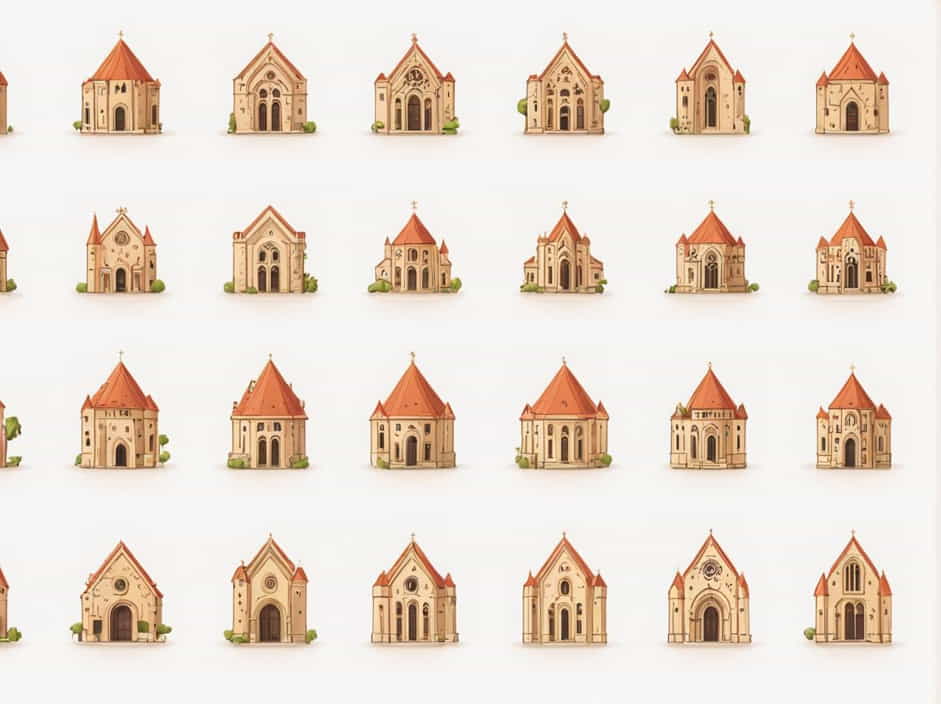Romanesque and Gothic architecture are two of the most influential architectural styles in history. Both emerged in medieval Europe, but they have distinct characteristics that set them apart. Romanesque architecture, which flourished between the 10th and 12th centuries, is known for its thick walls, round arches, and fortress-like structures. Gothic architecture, which followed in the 12th to 16th centuries, introduced pointed arches, ribbed vaults, and large stained-glass windows.
This topic explores the key differences between Romanesque and Gothic architecture, including their design elements, structural innovations, and cultural significance.
Historical Background
Romanesque Architecture (10th-12th Century)
The Romanesque style developed in medieval Europe during the early Middle Ages. It was heavily influenced by Roman and Byzantine architecture. The primary goal of Romanesque buildings was to create strong, durable structures that could withstand time and external threats.
Gothic Architecture (12th-16th Century)
Gothic architecture emerged in France in the 12th century and spread across Europe. It was a response to the limitations of Romanesque structures, introducing innovative engineering techniques that allowed for taller, more elegant buildings with an emphasis on light and verticality.
Key Differences Between Romanesque and Gothic Architecture
1. Arches: Round vs. Pointed
One of the most obvious differences is the shape of the arches.
- Romanesque Architecture: Uses round arches, which create a heavy, solid appearance.
- Gothic Architecture: Features pointed arches, which distribute weight more efficiently, allowing for taller and more delicate structures.
2. Vaulting: Barrel vs. Ribbed
The vaulting system plays a major role in structural stability.
- Romanesque Architecture: Uses barrel vaults (semi-circular ceilings), which require thick walls and small windows.
- Gothic Architecture: Uses ribbed vaults, which provide better weight distribution, allowing for larger windows and thinner walls.
3. Walls: Thick vs. Thin
- Romanesque Walls: Thick and heavy, built to support the weight of barrel vaults.
- Gothic Walls: Thinner, thanks to structural innovations like flying buttresses that help distribute weight.
4. Windows: Small vs. Large
- Romanesque Windows: Small and narrow, allowing minimal light.
- Gothic Windows: Large stained-glass windows, creating a sense of openness and illumination inside churches.
5. Height and Verticality
- Romanesque Buildings: Low and massive, with a horizontal emphasis.
- Gothic Buildings: Tall and vertical, reaching toward the sky, symbolizing a connection with God.
6. Exterior Appearance
- Romanesque Exteriors: Simple, with plain stone facades and limited ornamentation.
- Gothic Exteriors: Highly decorative, featuring statues, gargoyles, tracery, and intricate carvings.
7. Roof Design
- Romanesque Roofs: Low and heavy, with wooden or stone ceilings.
- Gothic Roofs: Steep and pointed, designed to complement the vertical structure.
Structural Innovations in Gothic Architecture
Gothic architecture introduced several engineering advancements that allowed for its iconic design:
- Pointed Arches – More efficient weight distribution.
- Ribbed Vaults – Stronger and more flexible than Romanesque barrel vaults.
- Flying Buttresses – External supports that allowed for taller, thinner walls and larger windows.
These innovations gave Gothic cathedrals their grand, awe-inspiring appearance, making them vastly different from the sturdy, fortress-like Romanesque buildings.
Famous Examples of Romanesque and Gothic Architecture
Notable Romanesque Structures
- Speyer Cathedral (Germany) – One of the largest Romanesque churches.
- Santiago de Compostela Cathedral (Spain) – A major pilgrimage site.
- Durham Cathedral (England) – A classic example of Romanesque style in the UK.
Famous Gothic Cathedrals
- Notre-Dame de Paris (France) – A masterpiece of Gothic architecture.
- Chartres Cathedral (France) – Known for its magnificent stained-glass windows.
- Milan Cathedral (Italy) – A stunning example of late Gothic style.
Symbolism in Romanesque and Gothic Architecture
Both architectural styles reflect the spiritual and cultural values of their time.
- Romanesque Architecture: Emphasizes strength, stability, and protection, symbolizing the power of the Church in medieval society.
- Gothic Architecture: Focuses on light, height, and beauty, representing a shift toward artistic expression and a deeper connection with the divine.
Romanesque and Gothic architecture may share some historical roots, but they have distinct differences in design, structure, and symbolism. Romanesque buildings are solid, heavy, and fortress-like, while Gothic structures are tall, elegant, and filled with light. The transition from Romanesque to Gothic marked a major evolution in architectural history, shaping the way churches and cathedrals were built for centuries.
Understanding these differences helps us appreciate the beauty and ingenuity of medieval architecture, whether in the form of Romanesque durability or Gothic grandeur.
